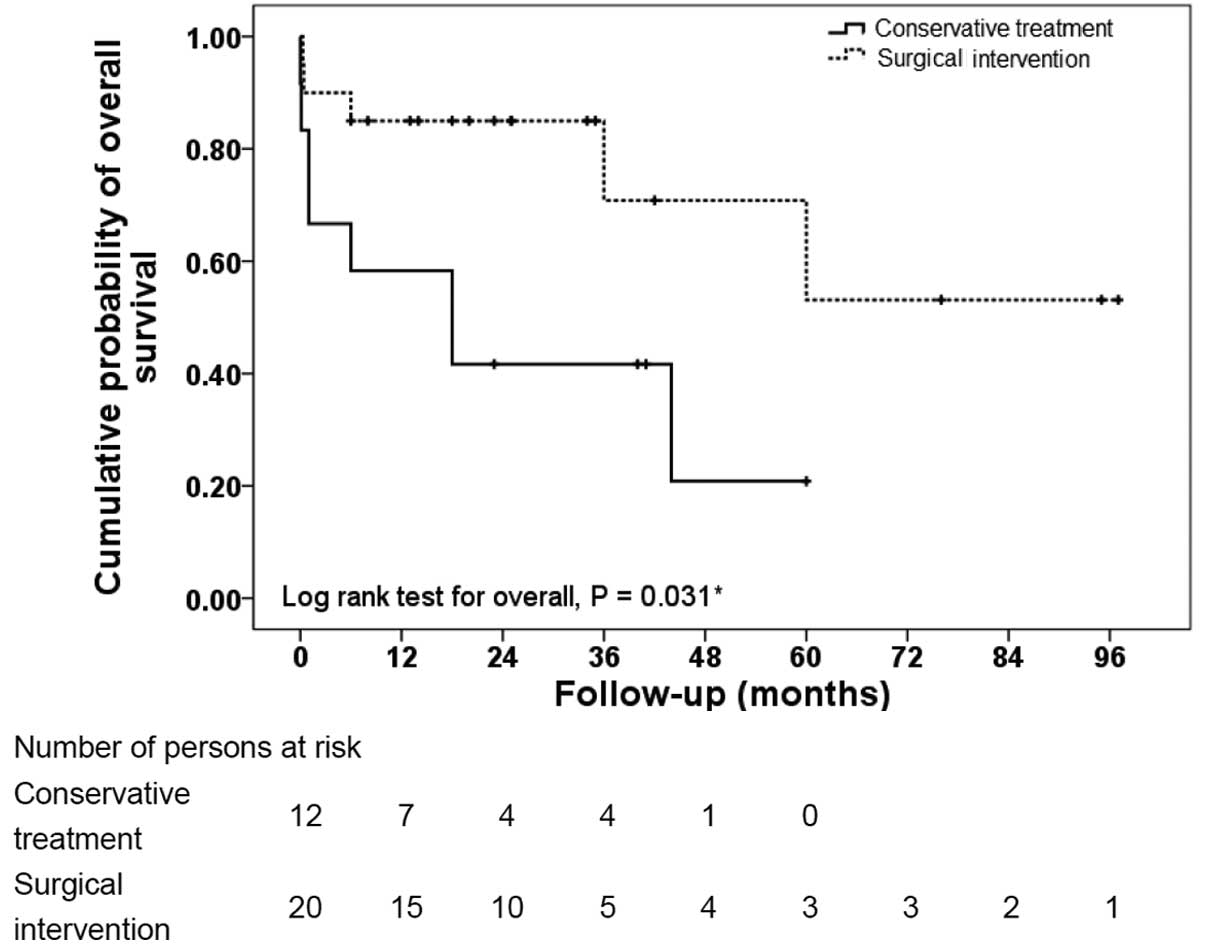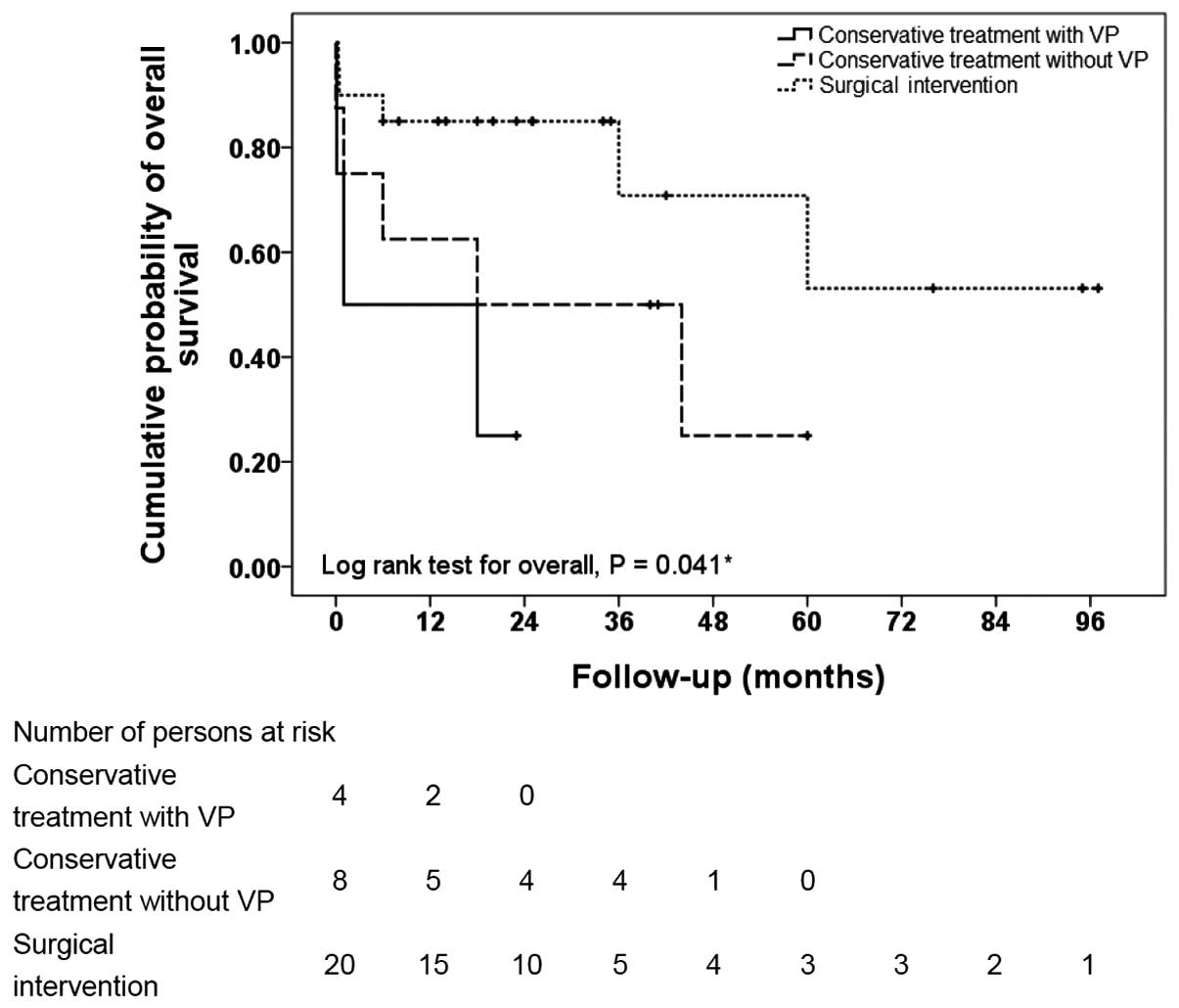|
1
|
Baldwin RT and Preston-Martin S:
Epidemiology of brain tumors in childhood - a review. Toxicol Appl
Pharmacol. 199:118–131. 2004. View Article : Google Scholar : PubMed/NCBI
|
|
2
|
Magnani C, Aareleid T, Viscomi S, Pastore
G and Berrino F; EUROCARE Working Group. Variation in survival of
children with central nervous system (CNS) malignancies diagnosed
in Europe between 1978 and 1992: the EUROCARE study. Eur J Cancer.
37:711–721. 2001. View Article : Google Scholar : PubMed/NCBI
|
|
3
|
Macedoni-Luksic M, Jereb B and Todorovski
L: Long-term sequelae in children treated for brain tumors:
impairments, disability, and handicap. Pediatr Hematol Oncol.
20:89–101. 2003. View Article : Google Scholar : PubMed/NCBI
|
|
4
|
Aarsen FK, Paquier PF, Reddingius RE,
Streng IC, Arts WF, Evera-Preesman M and Catsman-Berrevoets CE:
Functional outcome after low-grade astrocytoma treatment in
childhood. Cancer. 106:396–402. 2006. View Article : Google Scholar
|
|
5
|
Raaschou-Nielsen O, Sørensen M, Carstensen
H, Jensen T, Bernhardtsen T, Gjerris F and Schmiegelow K:
Increasing incidence of childhood tumours of the central nervous
system in Denmark, 1980–1996. Br J Cancer. 95:416–422. 2006.
View Article : Google Scholar : PubMed/NCBI
|
|
6
|
Sala F, Colarusso E, Mazza C, Talacchi A
and Bricolo A: Brain tumors in children under 3 years of age.
Recent experience (1987–1997) in 39 patients. Pediatr Neurosurg.
31:16–26. 1999. View Article : Google Scholar : PubMed/NCBI
|
|
7
|
Isaacs H Jr: I. Perinatal brain tumors: a
review of 250 cases. Pediatr Neurol. 27:249–261. 2002. View Article : Google Scholar : PubMed/NCBI
|
|
8
|
Bishop AJ, McDonald MW, Chang AL and
Esiashvili N: Infant brain tumors: incidence, survival, and the
role of radiation based on Surveillance, Epidemiology, and End
Results (SEER) Data. Int J Radiat Oncol Biol Phys. 82:341–347.
2012. View Article : Google Scholar
|
|
9
|
Johnson MW, Eberhart CG, Perry A, Tihan T,
Cohen KJ, Rosenblum MK, Rais-Bahrami S, Goldthwaite P and Burger
PC: Spectrum of pilomyxoid astrocytomas: intermediate pilomyxoid
tumors. Am J Surg Pathol. 34:1783–1791. 2010. View Article : Google Scholar : PubMed/NCBI
|
|
10
|
Furuta T, Tabuchi A, Adachi Y, Mizumatsu
S, Tamesa N, Ichikawa T, Tamiya T, Matsumoto K and Ohmoto T:
Primary brain tumors in children under age 3 years. Brain Tumor
Pathol. 15:7–12. 1998. View Article : Google Scholar
|
|
11
|
Hanieh S, Hanieh A, Bourne AJ and Byard
RW: Brain tumours in infancy: a clinicopathological study. J Clin
Neurosci. 4:181–185. 1997. View Article : Google Scholar : PubMed/NCBI
|
|
12
|
Larouche V, Huang A, Bartels U and Bouffet
E: Tumors of the central nervous system in the first year of life.
Pediatr Blood Cancer. 49(Suppl): 1074–1082. 2007. View Article : Google Scholar : PubMed/NCBI
|
|
13
|
DiRosso C, Ianelli A and Papacci F:
Infantile brain tumors. Tumors of the Pediatric Central Nervous
System. 2. Keating RF, Goodrich JT and Packer R: Thieme; New York:
pp. 3942013
|
|
14
|
Magdum SA: Neonatal brain tumours - a
review. Early Hum Dev. 86:627–631. 2010. View Article : Google Scholar : PubMed/NCBI
|
|
15
|
Thorp N: Basic principles of paediatric
radiotherapy. Clin Oncol (R Coll Radiol). 25:3–10. 2013. View Article : Google Scholar
|
|
16
|
Kim YH, Song SW, Lee JY, et al: Surgically
treated brain tumors: a retrospective case series of 10,009 cases
at a single institution. World Neurosurg. 76:555–563. 2011.
View Article : Google Scholar
|
|
17
|
Soriano SG, Eldredge EA and Rockoff MA:
Pediatric neuroanesthesia. Anesthesiol Clin North America.
20:389–404. 2002. View Article : Google Scholar : PubMed/NCBI
|
|
18
|
Gaggero R, Consales A, Fazzini F, et al:
Epilepsy associated with supratentorial brain tumors under 3 years
of life. Epilepsy Res. 87:184–189. 2009. View Article : Google Scholar : PubMed/NCBI
|
|
19
|
Louis DN, Ohgaki H, Wiestler OD, Cavenee
WK, Burger PC, Jouvet A, Scheithauer BW and Kleihues P: The 2007
WHO classification of tumours of the central nervous system. Acta
Neuropathol. 114:97–109. 2007. View Article : Google Scholar : PubMed/NCBI
|
|
20
|
Dunham C, Pillai S and Steinbok P: Infant
brain tumors: a neuropathologic population-based institutional
reappraisal. Hum Pathol. 43:1668–1676. 2012. View Article : Google Scholar : PubMed/NCBI
|
|
21
|
Ramanan M and Chaseling R: Paediatric
brain tumours treated at a single, tertiary paediatric
neurosurgical referral centre from 1999 to 2010 in Australia. J
Clin Neurosci. 19:1387–1391. 2012. View Article : Google Scholar : PubMed/NCBI
|
|
22
|
Ibrahim K and Appleton R: Seizures as the
presenting symptom of brain tumours in children. Seizure.
13:108–112. 2004. View Article : Google Scholar : PubMed/NCBI
|
|
23
|
Balestrini MR, Micheli R, et al: Brain
tumors with symptomatic onset in the first two years of life.
Childs Nerv Syst. 10:104–110. 1994. View Article : Google Scholar : PubMed/NCBI
|
|
24
|
Rickert CH, Probst-Cousin S and Gullotta
F: Primary intracranial neoplasms of infancy and early childhood.
Childs Nerv Syst. 13:507–513. 1997. View Article : Google Scholar : PubMed/NCBI
|
|
25
|
Rangwala LM and Liu GT: Pediatric
idiopathic intracranial hypertension. Surv Ophthalmol. 52:597–617.
2007. View Article : Google Scholar : PubMed/NCBI
|
|
26
|
Cohen BH: Headaches as a symptom of
neurological disease. Semin Pediatr Neurol. 2:144–150. 1995.
View Article : Google Scholar : PubMed/NCBI
|
|
27
|
Fleming AJ and Chi SN: Brain tumors in
children. Curr Probl Pediatr Adolesc Health Care. 42:80–103. 2012.
View Article : Google Scholar : PubMed/NCBI
|
|
28
|
Orbach D, Sarnacki S, Brisse HJ, et al:
Neonatal cancer. Lancet Oncol. 14:e609–e620. 2013. View Article : Google Scholar : PubMed/NCBI
|
|
29
|
Khan SN and Sepahdari AR: Orbital masses:
CT and MRI of common vascular lesions, benign tumors, and
malignancies. Saudi J Ophthalmol. 26:373–383. 2012. View Article : Google Scholar
|
|
30
|
Parmar HA, Pruthi S, Ibrahim M and Gandhi
D: Imaging of congenital brain tumors. Semin Ultrasound CT MR.
32:578–589. 2011. View Article : Google Scholar : PubMed/NCBI
|
|
31
|
Koob M and Girard N: Cerebral tumors:
specific features in children. Diagn Interv Imaging. 95:965–983.
2014. View Article : Google Scholar : PubMed/NCBI
|
|
32
|
McGirt MJ, Chaichana KL, Gathinji M, et
al: Independent association of extent of resection with survival in
patients with malignant brain astrocytoma. J Neurosurg.
110:156–162. 2009. View Article : Google Scholar
|
|
33
|
Khalil EM: Treatment results of adults and
children with medulloblastoma NCI, Cairo University experience. J
Egypt Natl Canc Inst. 20:175–186. 2008.PubMed/NCBI
|
|
34
|
Vabulas M, Kumar VA, Hamilton JD, Martinez
JJ, Rao G, Sawaya R and Prabhu SS: Real-time atlas-based
stereotactic neuronavigation. Neurosurgery. 74:128–134. 2014.
View Article : Google Scholar
|
|
35
|
Steinbok P, Mangat JS, Kerr JM, Sargent M,
Suryaningtyas W, Singhal A and Cochrane D: Neurological morbidity
of surgical resection of pediatric cerebellar astrocytomas. Childs
Nerv Syst. 29:1269–1275. 2013. View Article : Google Scholar : PubMed/NCBI
|
|
36
|
Roujeau T, Di Rocco F, Dufour C, et al:
Shall we treat hydrocephalus associated to brain stem glioma in
children? Childs Nerv Syst. 27:1735–1739. 2011. View Article : Google Scholar : PubMed/NCBI
|
|
37
|
Han YP, Zhao Y, He XG and Ma J: Peritoneal
metastasis of third ventricular atypical teratoid/rhabdoid tumor
after VP shunt implantation for unexplained hydrocephalus. World J
Pediatr. 8:367–370. 2012. View Article : Google Scholar : PubMed/NCBI
|
|
38
|
Garzón M, García-Fructuoso G, Guillén A,
Suñol M, Mora J and Cruz O: Brain stem tumors in children and
adolescents: single institutional experience. Childs Nerv Syst.
29:1321–1331. 2013. View Article : Google Scholar : PubMed/NCBI
|











